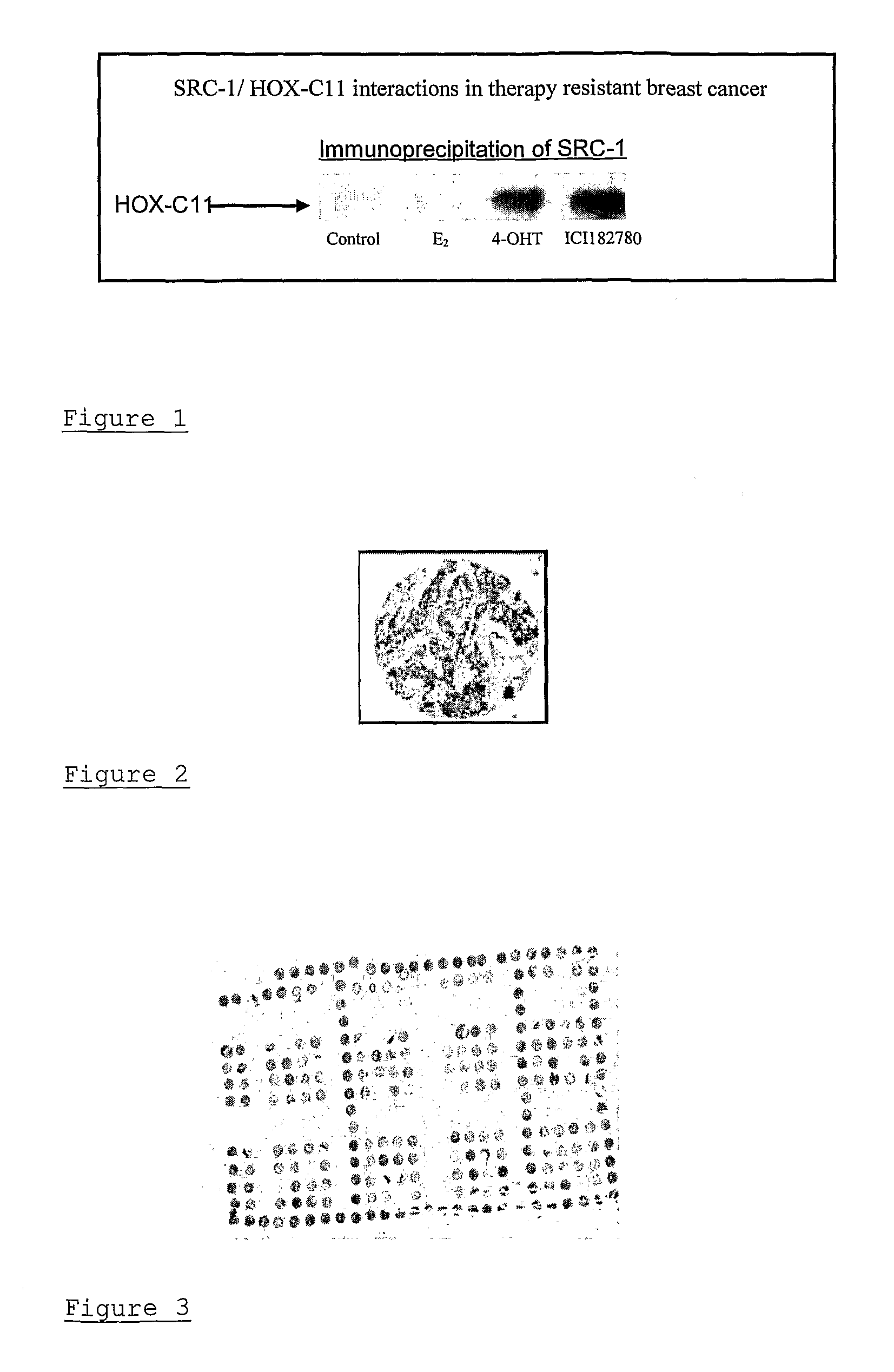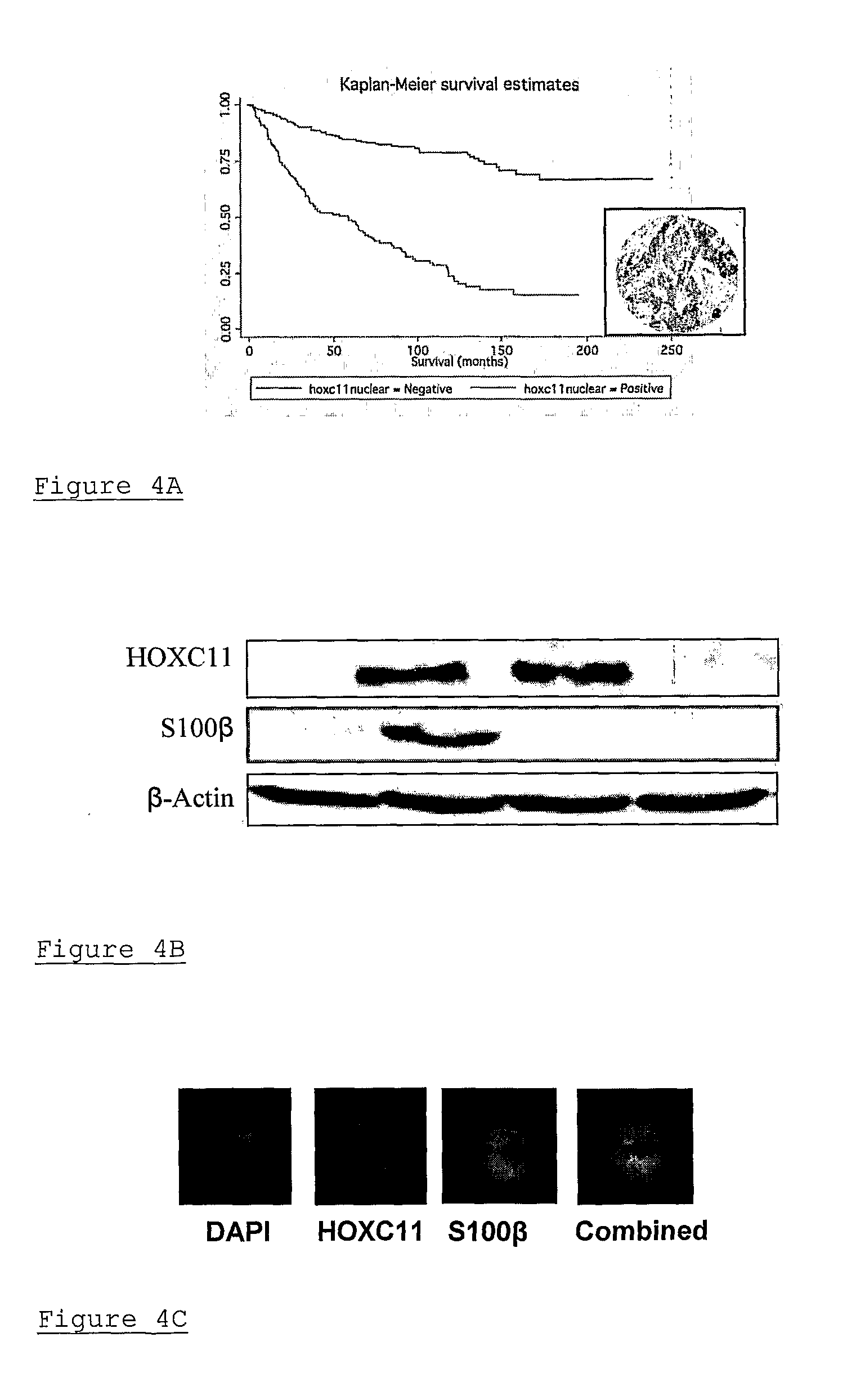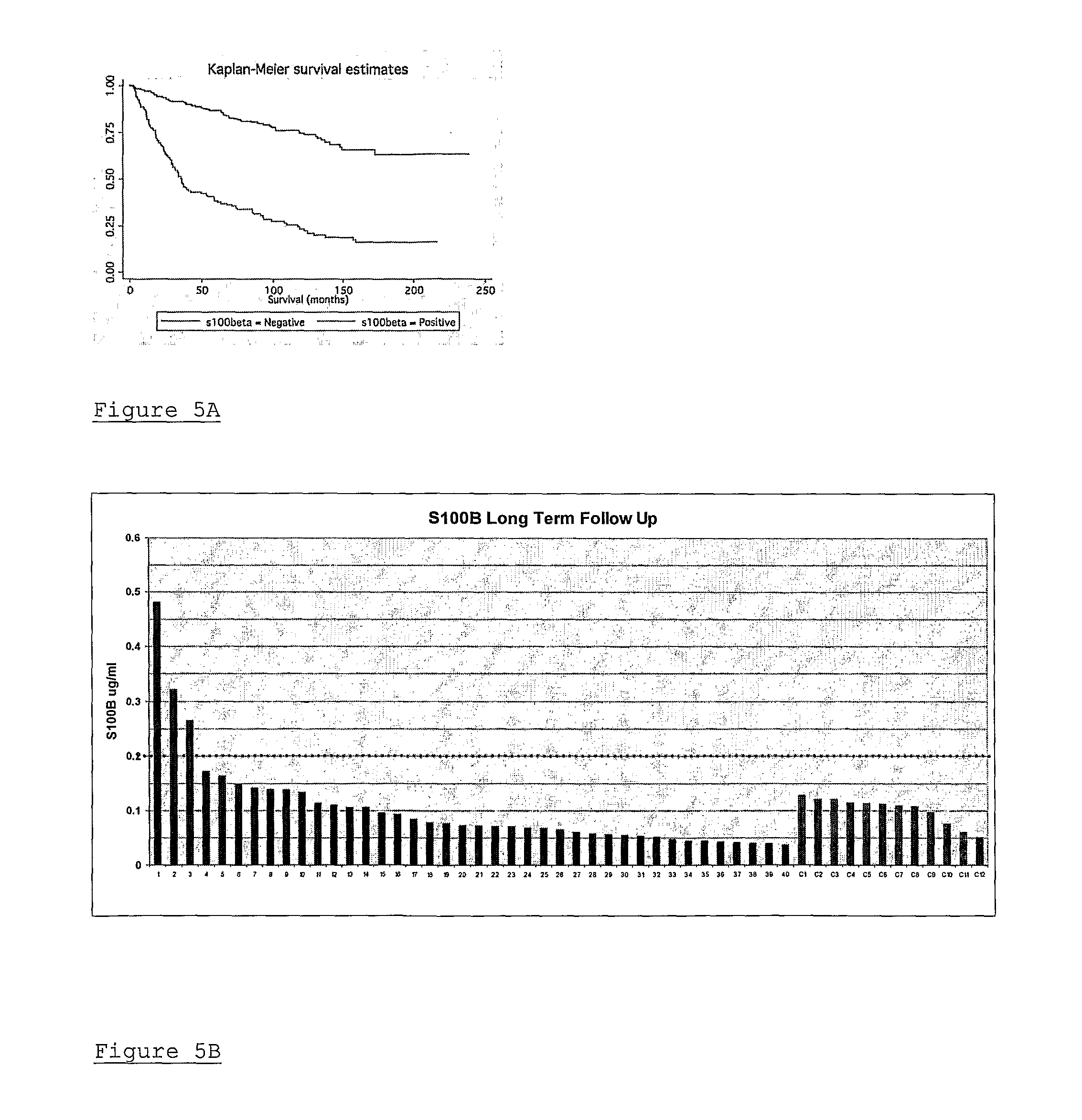Method of assessing cancer status in a breast cancer patient
a breast cancer and patient technology, applied in the field of breast cancer patient status assessment, can solve the problems of recurrence, limited widespread use, unanswered questions regarding sequencing and duration of adjuvant therapy, etc., and achieve the effect of avoiding the need for biopsy and being suitable for detection
- Summary
- Abstract
- Description
- Claims
- Application Information
AI Technical Summary
Benefits of technology
Problems solved by technology
Method used
Image
Examples
Embodiment Construction
[0036]The genomic actions of estrogen are mediated through its nuclear receptor, leading to the transcription and translation of genes relevant to tumour progression. The ER is encoded for by 2 genes, ER-α and ER-β. The magnitude of ER gene regulation is influenced, not only by the ligand, but also by the presence of specific co-regulatory proteins, present at rate limiting levels, which modulate transcription. Over the past few years a number of nuclear receptor interacting proteins have been identified including the p160 family coactivator proteins—steroid receptor coactivator-1 (SRC-1 / NCoA-1), SRC-2 (TIF2 / GRIP1) and SRC-3 (AIB1 / pCIP / RAC3 / ACTR). The SRC coactivator proteins can enhance nuclear receptor transcriptional activity by enabling access of transcription factors and RNA polymerase II core machinery to target DNA. Despite the well documented redundancy between members of the SRC family, it is clear from functional studies that individual SRCs harbour the capacity to regulat...
PUM
| Property | Measurement | Unit |
|---|---|---|
| time | aaaaa | aaaaa |
| time | aaaaa | aaaaa |
| time | aaaaa | aaaaa |
Abstract
Description
Claims
Application Information
 Login to View More
Login to View More - R&D
- Intellectual Property
- Life Sciences
- Materials
- Tech Scout
- Unparalleled Data Quality
- Higher Quality Content
- 60% Fewer Hallucinations
Browse by: Latest US Patents, China's latest patents, Technical Efficacy Thesaurus, Application Domain, Technology Topic, Popular Technical Reports.
© 2025 PatSnap. All rights reserved.Legal|Privacy policy|Modern Slavery Act Transparency Statement|Sitemap|About US| Contact US: help@patsnap.com



